Thierry Mugler’s Art of Fashion: Avant-Garde and Iconic
Thierry Mugler’s art redefined the boundaries of fashion, blending creativity, drama, and innovation. His bold silhouettes and futuristic...
Errika Gerakiti 30 December 2024
2 September 2023 min Read
The Victoria & Albert Museum in London has a stunning collection of jewelry. Every time I visit the museum, I make a point to also check out the collection, as if it was my jewelry box. One can always dream… Gold, diamonds, emeralds, sapphires, rubies, stones in all colors of the rainbow and jewelry pieces with plenty of history.
The Victoria and Albert jewelry collection includes a gold Celtic breastplate, jeweled pendants given by Elizabeth I to her courtiers, diamonds worn by Catherine the Great of Russia, jewelry by the Art Nouveau designer, Réné Lalique, diamond tiaras by Cartier, and contemporary works by Wendy Ramshaw, Peter Chang, and Marjorie Schick. So, this article is just a taste of all the wonders you can see there.
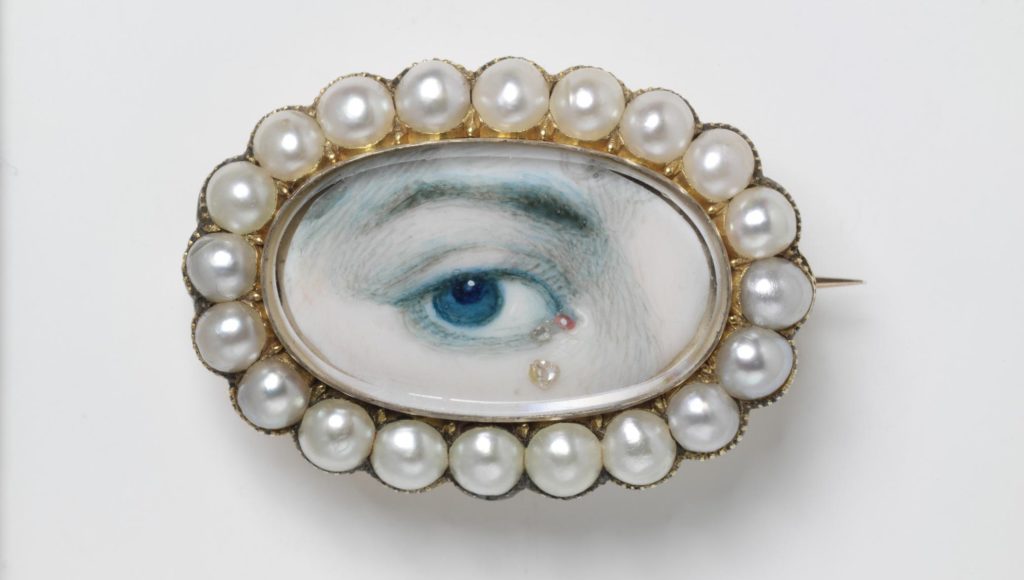
Eye miniatures were briefly in fashion at the end of the 18th century. They originated in France and were an attempt to capture “the window of the soul,” the supposed reflection of a person’s most intimate thoughts and feelings. Often, as here, the result is pleasing to the eye (sic!). Sometimes, however, it could be disturbingly uncanny.
The eye is one of the oldest and most powerful symbols used by man. For that reason, it appears a variety of contexts, from Italian cupolas (all-seeing eye of God), through Masonic Order, to the French police buckles and belts as a symbol of watchfulness.
While it is beautiful to look at, I am not sure how comfortable I would be wearing it. It does feel a touch too realistic, don’t you think?
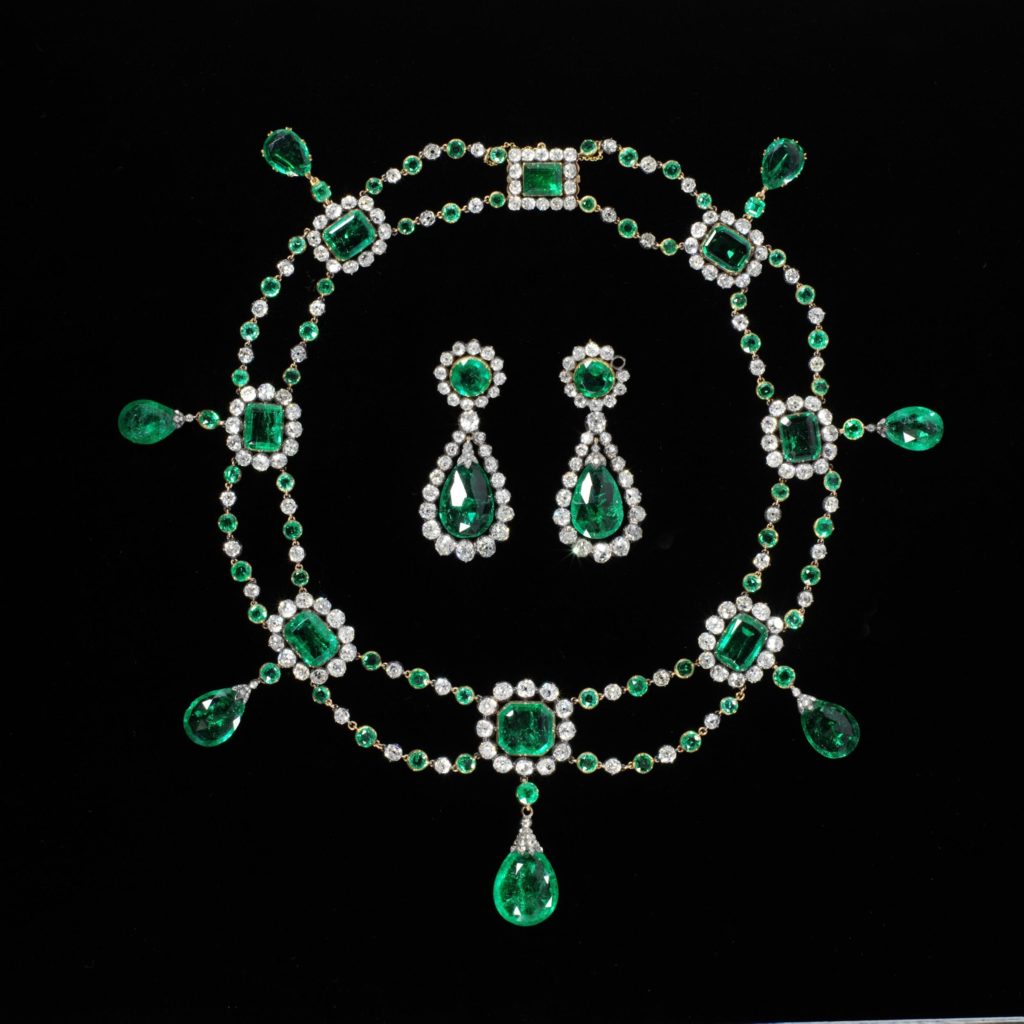
This necklace and earrings are part of a larger set or parure of jewelry. A parure is a matching suite of jewelry that consists of interchangeable pieces that expand the wearability of the set.
Most probably Napoleon Bonaparte and his consort Joséphine gave them to their adopted daughter, Stéphanie de Beauharnais, as a wedding gift in 1806. The large stones and the simplicity of design are typical of jewelry favored at the court of Napoleon.
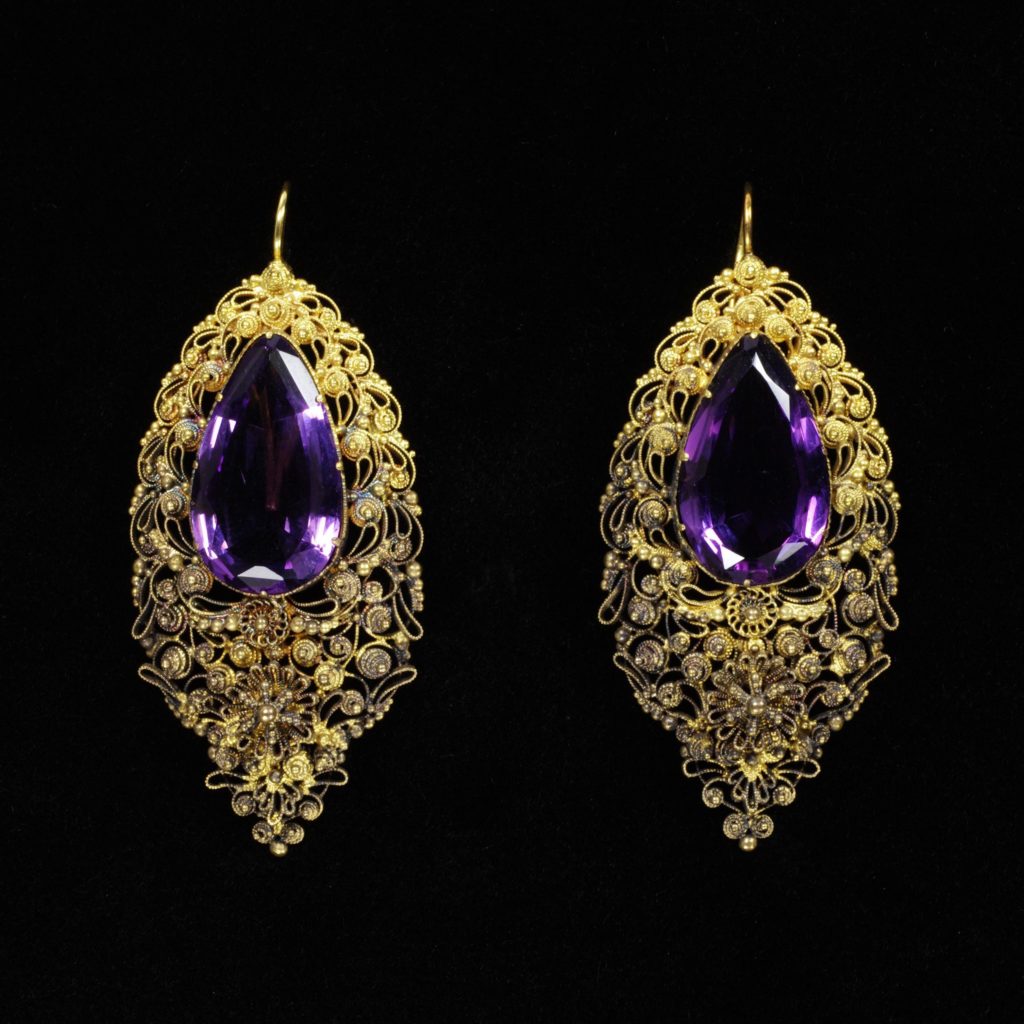
Gold became a dominant element in jewelry from the 1820s. It was used, of course, for centuries, but at that time the proportions between the precious stones and gold shifted. These earrings are the prime example, typically we’d expect the gold to only form the supporting structure for the stone, here it plays an equal part.
The earrings are made in the technique of filigree with spirals and granules (cannetille and grainti). French jewelers revived this technique and their English counterparts happily copied it. Jewelers liked the economical use of gold and women appreciated the intricacy of the style. Everyone was happy! I know I would be with earrings like that.
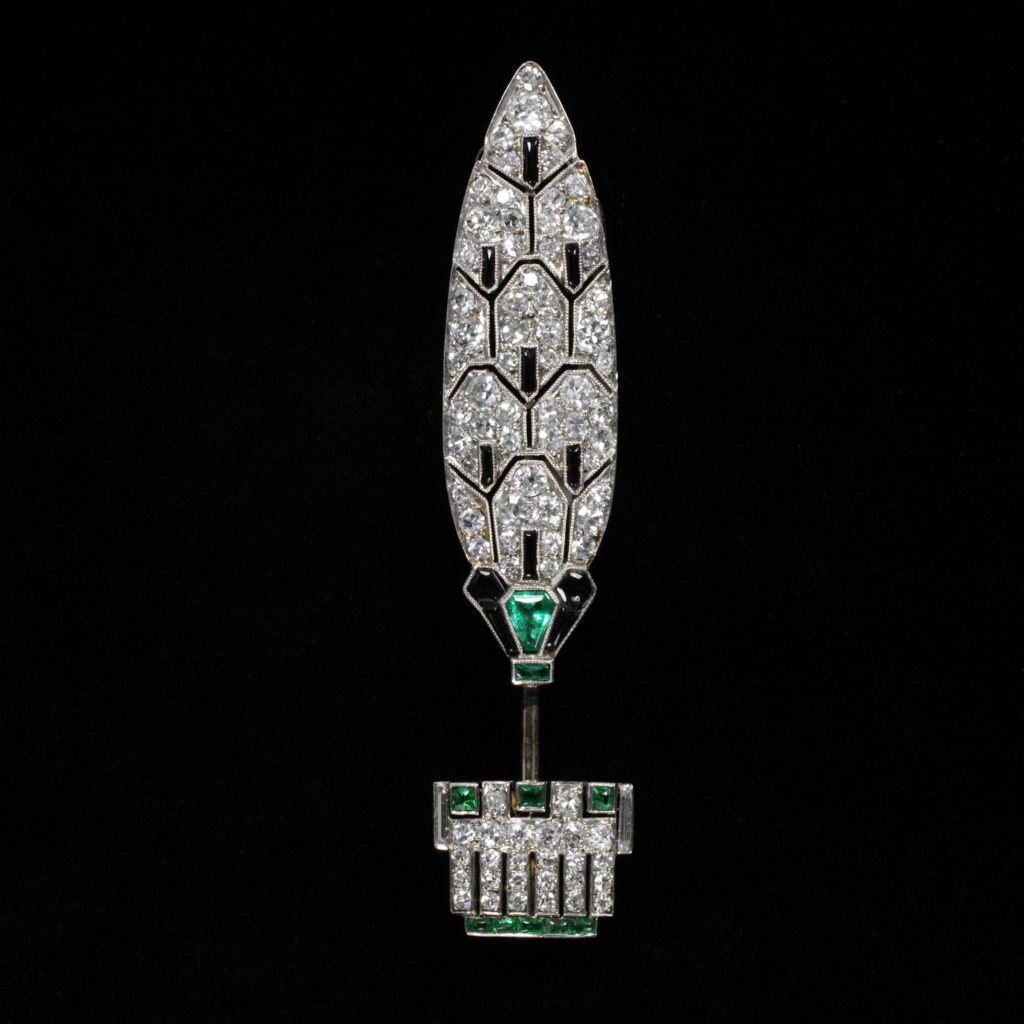
This Art Deco brooch is in the shape of a stylized cypress tree. The diamonds set against stained chalcedony form areas of contrasting pattern and reflection. The geometrical form is very typical to the style of Art Deco.
The International Exhibition of Modern Decorative and Industrial Arts held in Paris in 1925 gave the style its name. Art Deco can be seen as the successor to and a reaction against Art Nouveau. Its chief difference from Art Nouveau is the influence of cubism which gives art deco design generally a more fragmented, geometric character. However, imagery based on plant forms, and sinuous curves remained in some Art Deco designs.
Black onyx often appears in Art Deco jewelry, because of its dramatic effect, especially when combined with diamonds. It is a rare stone, but possible to substitute by paler chalcedony soaked in a boiling sugar solution and then heated up it in sulphuric acid. Probably best not to try at home.
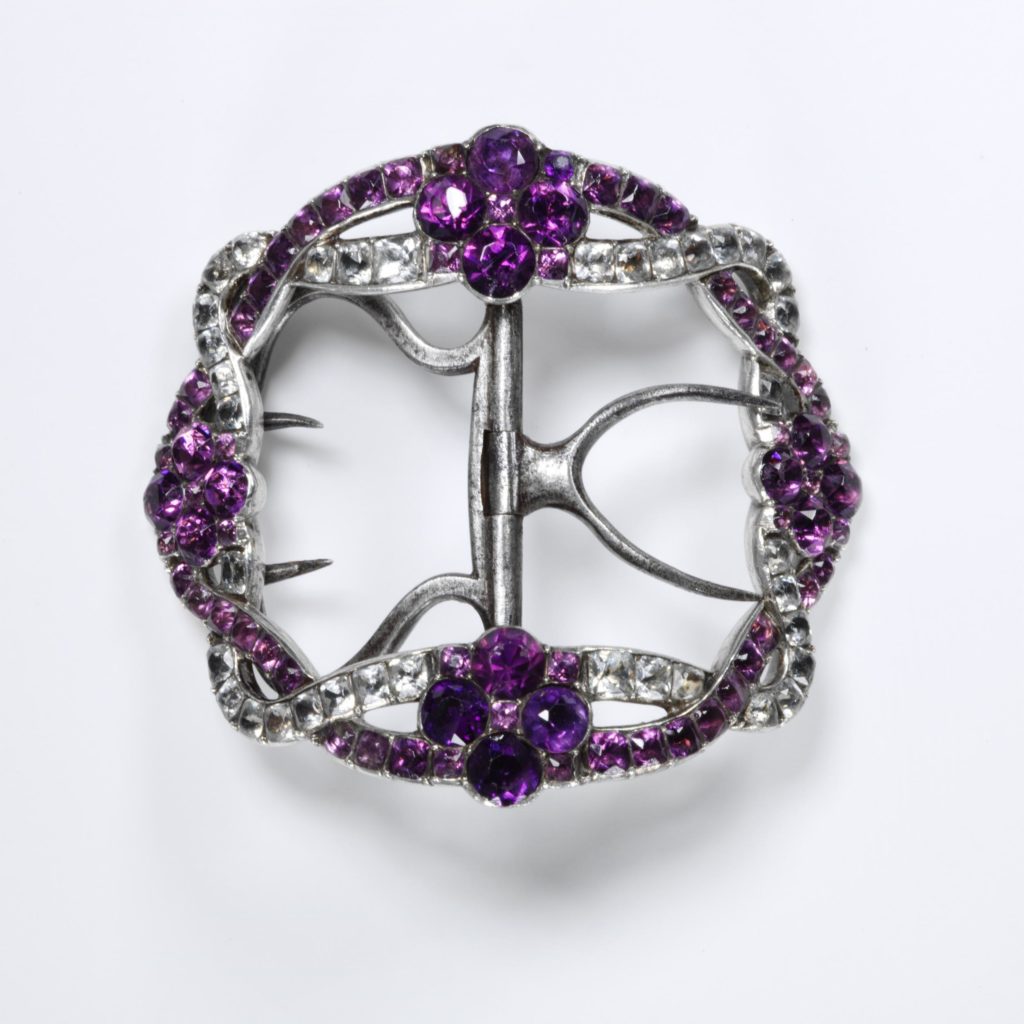
In the 18th century, both men and women wore shoe buckles and they were fashionable for most of the century. Initially small, the silver buckles of the early 1700s became larger during the 1720s. By the mid-century gemstones or paste added the color and sparkle. Unfortunately for us by the end of the century, they started falling out of everyday fashion and remained only in ceremonial or court dress.
Imagine your shoes having shoe buckles like this! I can totally see them on my black trainers! Actually, I am pretty sure I could figure out a way to wear any of those pieces (apart from the creepy eye).
How would you wear the pieces from the Victoria & Albert jewelry collection?
DailyArt Magazine needs your support. Every contribution, however big or small, is very valuable for our future. Thanks to it, we will be able to sustain and grow the Magazine. Thank you for your help!